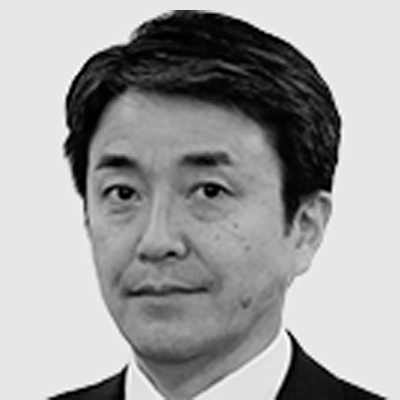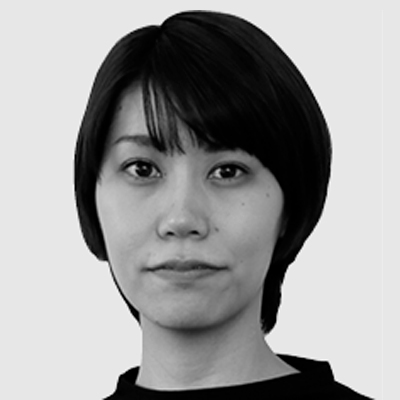Hitachi Solutions for New Work Styles
Measures for utilizing human capital and ICT for work style reform and productivity improvement are bringing many changes to the way office workers go about their work. Along with requiring office spaces to be equipped with functional features that are in line with these changes, this should also deliver improvements in QoL through higher satisfaction levels and a better working environment for office workers. This article describes an office fit out service that delivers comfortable office spaces.



Companies have set themselves a wide variety of objectives in their pursuit of work style reform, including flexible working practices, workforce diversity, improving the productivity of the organization, and reducing costs(1). While revising corporate practices and adopting information and communication technology (ICT) tools are among the key measures being used to achieve these objectives, office fit out is another important consideration that should not be overlooked. The requirements when fitting out offices are to design spaces that function appropriately and flexibly amid the changes that arise out of these measures, and to provide office workers with pleasant and satisfying spaces in which to work. In other words, what is expected of an office fit out is that it helps to improve the quality of life (QoL) of office workers, thereby indirectly assisting in achieving the objectives of these measures.
Hitachi Document Solutions Co., Ltd. has a history of supplying services that meet the challenges faced by customers across all offices. Customer requirements, meanwhile, are becoming more diverse as action on work style reform picks up pace. This article describes what the company is doing to respond to changes in the area of office fit out.
Hitachi Document Solutions already supplies office fit out along with its other services, which include document management and managed print service, and has built up considerable experience, especially in areas like assisting with the management of relocation projects. With the shift in attention to work style reform, however, the following three challenges have arisen with regard to office fit outs.
Hitachi Document Solutions believes that dealing with these challenges requires providing greater support in the earlier stages of the process than has been offered in the past. This has led to the adoption of the “experience-oriented approach” being promoted by Hitachi, Ltd.
Based on the idea of design thinking, the experience-oriented approach involves activities for working with customers on the collaborative creation of new businesses or services(2), taking user experience values as a starting point. The user experience values referred to here are the enjoyment, emotion, and happiness that people get from using a product or service.
Hitachi Document Solutions has sought to acquire knowledge and improve its skills in the experience-oriented approach by entering into a contract with the Experience Oriented Approach Promotion Department of Hitachi, especially the creative department of its communication business.
In its office business also, Hitachi Document Solutions is seeking to expand its involvement in the early planning stages by working with staff who have studied and used the experience-oriented approach in the past to utilize a variety of different value creation methods and other know-how.
Using office relocation projects as an example, whereas in the past Hitachi Document Solutions usually only became involved in assisting the management of these projects from the basic design phase, after the customer had done their own planning, the company is now starting to focus on working with customers from the concept development phase of office fit out (see Figure 1).
In practice, the concept development phase involves holding discussions with the customer to determine the current situation and to clarify the purpose of the relocation and the role that office fit out is to play. This is followed by an assessment and analysis (programming) phase in which quantitative and qualitative surveys are performed to determine the situation at the office, and to incorporate this into the basic design together with input from the people who work there. Formulating a concept for the office space that will satisfy office workers with a variety of different viewpoints helps make the subsequent work go more smoothly.
Practices based on this approach were trialed in the relocation and consolidation of the company's own headquarters. The following section provides details.
Figure 1—Basic Flow of Office Fit Out Office fit out involves six (+1) processes spread across four different stages: planning and assessment, design, construction, and operation.
Office fit out involves six (+1) processes spread across four different stages: planning and assessment, design, construction, and operation.
Figure 2—Organizational Chart for Headquarters Relocation Project The work is split between three working groups (WGs) under the direction of the project team.
The work is split between three working groups (WGs) under the direction of the project team.
Figure 3—Office Designed to Promote Innovation Free-addressing (top) was adopted to encourage cross-departmental interaction, with a number of departments sharing the same floor. Small meeting spaces (bottom) were also provided to facilitate small-group communications.
Free-addressing (top) was adopted to encourage cross-departmental interaction, with a number of departments sharing the same floor. Small meeting spaces (bottom) were also provided to facilitate small-group communications.
Figure 4—Elimination of Paper Storage and Effective Use of Space A “magnet space” (top) was created to encourage interaction by shifting waste receptacles along with multifunction peripherals and printers that had previously been scattered about the floor to a central location. The quantity of paper documents was reduced and the storage space consolidated as personal lockers (bottom).
A “magnet space” (top) was created to encourage interaction by shifting waste receptacles along with multifunction peripherals and printers that had previously been scattered about the floor to a central location. The quantity of paper documents was reduced and the storage space consolidated as personal lockers (bottom).
Hitachi Document Solutions undertook a headquarters relocation that consolidated its head office operations (approximately 550 people) that were previously split between three different sites. The goal was to achieve synergies between these different workplaces.
To ensure that the relocation went quickly and smoothly, the project started by doing the office fit out in a way that incorporated the views and requirements of management and staff (see Figure 2).
The disadvantages of having separate offices that came up in the results of a staff survey were that people were unaware of what other departments were doing, and that information was not passed on in a timely manner. This led to the analysis concluding that the current issues were a strong silo mentality and the slow speed of information dissemination. Accordingly, the relocation working group (WG) defined the objectives of the project (its “concept”) as being to enhance communication through improvements in the office environment and to provide working spaces that improve productivity by being easy to use. An aim of freeing up workspace by cutting down on the use of paper documents was also included to help achieve these first two objectives.
The first objective to be addressed was that of freeing up workspace by cutting down on the use of paper documents. A target of reducing paper documents by 70% was set with the aim of drastically reducing use of office space for archiving.
Documents were sorted into those that were and were not necessary, with unnecessary documents being disposed of and the company's own paper document storage service being used to handle documents that were still needed but seldom used, storing these off-site. Those documents that were frequently used and were also required for sharing information were converted to electronic format and placed in a document management system where they would be available within the company. In this way, the target of a 70% reduction was achieved.
The reduction in the number of cabinets for document storage made more space available in the office and allowed the planning, sales, and system engineering departments to be consolidated on the same floor. The following features were also included to ensure that the office fit out had a high degree of flexibility while also facilitating diversity (see Figure 3).
After relocation and consolidation, the measures described above succeeded in invigorating communication, making the new office an easier place to work, and freeing up space by reducing the use of paper documents, resulting in an office environment that satisfied the initial goal of achieving synergies (see Figure 4).
Responding to a questionnaire, 88% of staff agreed that communicating with other departments had been made easier; 80% said that reporting, communication, and consulting with supervisors had been made easier; 70% said that the number of meetings that used paper documents had been reduced; and 75% said that productivity had improved in the new office. With regard to the working space made available by reducing paper documents, the project succeeded in eliminating enough documents to fill 200 six-shelf cabinets (equivalent to 13,300 5-cm-thick-stacks of files).
In addition to the meeting tables suitable for use by two or three people, the provision of a movable display in the meeting corner helped speed up the pace of work by allowing documents to be viewed on screen when needed rather than printing them out on paper beforehand.
The use of software such as Skype for Business for telework is among the measures being adopted by Hitachi Group in its pursuit of work style reform. Along with the ICT infrastructure, digitizing drawings, contracts, and other documents into electronic form is important to being able to work anywhere and anytime.
The growing diversity of working practices is making telework from home or a satellite office more common. If documents such as contracts or designs held at the office or in an archive are to be viewed when teleworking, the documents first need to be digitized. Furthermore, practices need to be established whereby these digitized documents are held in a document management system from which they can be accessed easily regardless of time or place.
Multifunction peripherals and printers take up a lot of the limited space in an office. The amount of useful space in an office can be increased by optimizing the number of devices installed based on a review of the number of people at the office, how frequently they are present, and the number of pages printed.
The installation of secure printing systems that utilize smartcards or biometric authentication can also limit the amount of unnecessary printing and facilitate paperless practices.
To create office environments that suit the way customers work, Hitachi Document Solutions provides an office fit out service that seeks to improve office worker QoL by leveraging its experience from numerous past office fit outs and offering support from the early planning stages.
Figure 5 shows an overview of this office fit out service. By delivering value to customers, this service helps establish environments that boost creativity and productivity (see Table 1).
Office working practices and how office spaces are created continue to change in response to the growing diversity of work styles and advances in ICT, with further innovations expected in the future. By operating its office fit out service emphasizing collaborative creation with customers from the conceptual planning stage, Hitachi Document Solutions intends to continue contributing to the creation of office spaces that meet customers' needs.